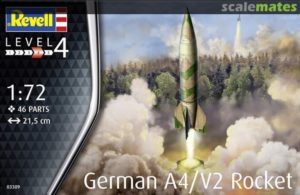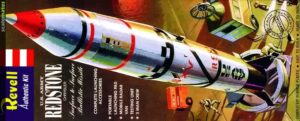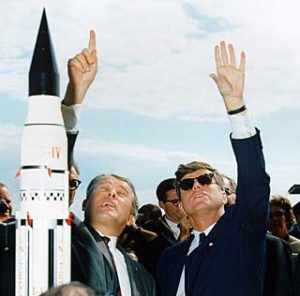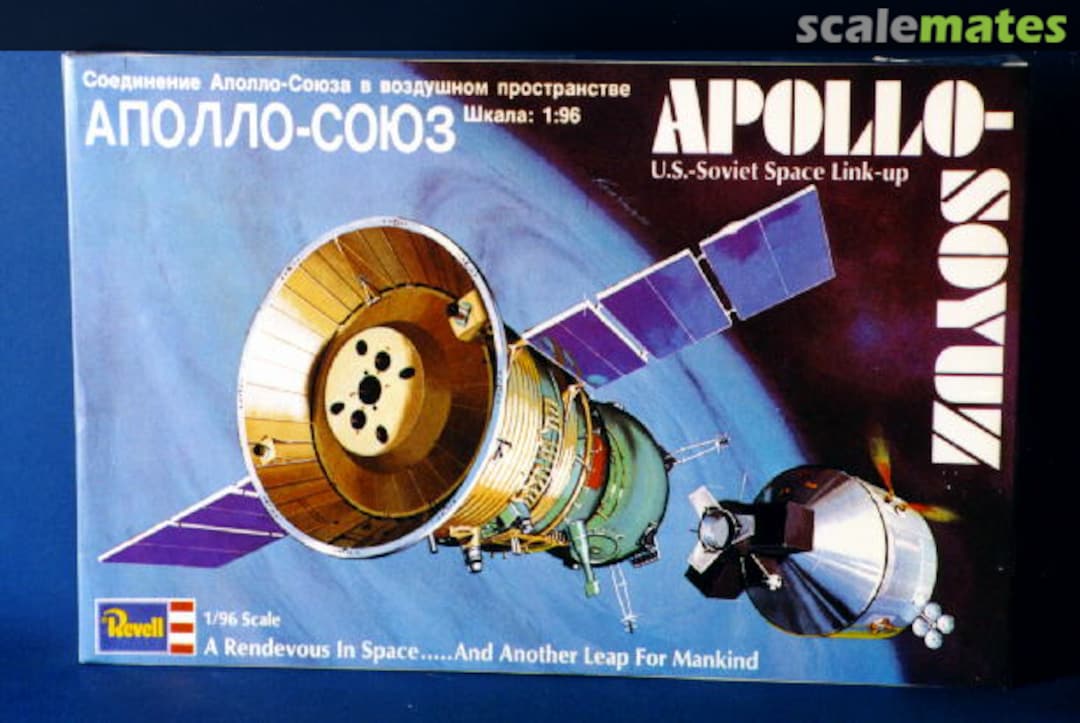Apollo-Soyuz, Revell 1997, presented by Scalemates
Perhaps it has always been the case that nations have measured each other, probably mostly in battle. The battle on the battlefield, bloody and deadly, the battle in the arena against animals. Or for the more intellectually elevated, since, it is thought, 2000 BC, the pan-Hellenic games, which in modern times are fought out all over the world. How do you compete in the Cold War? Physical fighting is not possible. Many animals give up in time when it is clear who is the stronger. With humanoids, the winner is the one who doesn't stay down permanently. This is bad for the two largest nations, the USSR and the USA, because everyone still wants to exist after such a fight. The Second World War, the starting point of globalisation, when the spoils were divided up by the two big nations, it was not clear which system was better or more dominant. Like in Monopoly, the fields were occupied and cultivated. The Second World War ended with Japan's surrender. Immediately, the eight or so more local wars began, motivated by decolonisation and bloc formation to define the local power structure as well. The last of these wars, the Korean War, made it clear that the two great powers did not have to face each other, but that a smaller country could be found where the conflict could be fought out by proxy. Currently, such a kind of war is being worked on in Ukraine.

Scalemate presenting Revell's German A4/V2 Rocket
After this historical excursion we come back to the year... Now this is difficult to define. After the foundation for space travel had been developed in the German Reich, albeit in order to carry warheads as far as possible into the enemy's playing field, the technology and technicians were in high demand. The two great victorious powers tried to grab what they could. The loot was shipped home and both great nations now tried to do something with it. The USA was able to get hold of some of these missiles, plans, but above all the technicians, who themselves tried to get into American captivity. The USSR gained access to the workshops through the division of Germany, the Soviet occupation zone. Few technicians ended up in the Soviet Union's sphere of influence, mostly those who preferred to remain in the eastern part of Germany. Both major nations quickly realised the potential of this technology and went to great lengths to occupy as much as they could in the wartime confusion of the German Reich. One must probably mention Sergei Pawlowitsch Koroljow, who was in charge of the Soviet target-oriented requisitioning in the German Reich, especially since he himself had been involved in rocket development since the 1930s and knew what was important. The USA, with its Operation Overcast, took everything that looked like a rocket. No doubt also aided by the volunteer prisoners of war who had worked on it and took the precaution of withholding material from the Red Army. Korolyov, an excellent technician, managed to work out the jigsaw puzzles that were missing and taken away to the USA. In the USA, the captured material, including the people, was stored for the time being. People and material were too contaminated with fascism, pride too great.
Since there was also an effort in the USA to use the missile as a weapon, the US Air Force was in charge of it. They developed the Atlas missile from 1946 to 1957, there was an interruption because funds were needed for the Korean War. Nevertheless, the first of this type of missile took off four months earlier, on 21 August 1957 near Baikonur in Kazakhstan. The Soviet rocket, then named R-7, is still known today as the Soyuz rocket, a family of rockets that has evolved over the years and is still in use. With 1936 launches to date, a solid workhorse. A rocket from this family also launched the Sputnik spacecraft in 1957, which, out of fear, was the spark that finally let the US enter the space race. There, the US Air Force was still tasked with taking on and winning the race. But the US Air Force was unable to build on the success of the Atlas rocket. With the end of the term of office of the 70-year-old 34th president of the USA, a 27-year younger and dynamic president entered the White House who did not have this categorically negative attitude towards the historical origins of the Germans and their team, who had meanwhile settled in Huntsville (Alabama). The pioneer of space travel, Wernher von Braun, who was already conducting research on the German side and whose early goal was to travel to the planets, did not remain idle in the USA either. If he was able to advance his dream through the armament projects in the German Reich, he also managed to get funding in the USA. Thus, the Redstone missile, based on the "Aggregat 4 / Retaliatory Weapon 2", was developed in parallel with the US Air Force's Atlas. It was not only to transport warheads, but also the first satellite of the USA and, in the course of the Mercury program in 1961, the first American into space.

Scalemate presenting Revell's U.S. Army Redstone
The Sputnik shock in 1957, was followed by the first dogs in space, the first man and first woman as cosmonauts in space, the first spacewalk (leaving the spacecraft), much longer stays in orbit than the US, the first pictures from the far side of the moon, the first probe on the moon, the first robot on the moon and the first space station into earth's orbit. Korojov's consistent work until 1966 had clearly paid off here in the race.
In the USA, this Soviet superiority was not to be accepted. Attentive observers also realised that the US Air Force was overburdened by its military tasks to also advance space flights, especially since Wernher von Braun's group worked more efficiently compared to the resources made available. Thus, the civilian US National Aeronautics and Space Administration was founded in 1958, and von Braun's team was quickly integrated. As early as 1959, the first studies on the Saturn rocket were made, two years before Kennedy's famous speech: We choose to go to the Moon.

And after this introductory prehistory, part 2 will follow, with the Revell company founded in Bünde in 1956 and the beautiful models around space travel.

